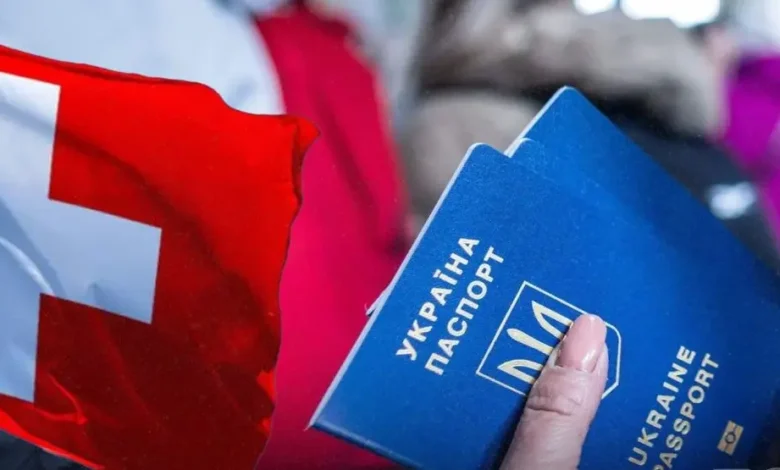Some Ukrainian refugees will lose their right to protection in Switzerland: who does this affect?

In the fourth year of the war in Ukraine, the attitude of European states towards Ukrainian refugees is gradually changing. If in the spring of 2022, most countries automatically opened borders, provided temporary protection and benefits, then the years 2024-2025 are marked by a tendency to gradually narrow the legal field, re-evaluate political decisions and try to differentiate the approach to immigrants. Switzerland is one of the countries in which this reassessment has entered the phase of practical action.
What changes are expected in Switzerland
This week, a proposal was submitted to the Swiss parliament, which provides for the limitation or complete cancellation of the automatic granting of S status to newly arrived Ukrainians. The country’s National Council is already considering the possibility of canceling or limiting the S collective protection status for Ukrainian citizens arriving from regions where there are no active hostilities. This is stated in messages of the Swiss publication NZZ. If these proposals come into force, some new applicants will lose their right to a simplified stay in Switzerland. The Swiss government must make a decision before the start of the parliamentary vacation, i.e. by the end of June 2025.
The initiator of the innovation was the Swiss People’s Party, one of the most influential political forces in the country, known for its tough stance on migration. Its representatives stated that “a large part of Ukrainian territories are stabilized”, therefore, persons coming from such regions do not need collective protection. It is proposed that instead of automatic access to S status, they should go through the normal asylum procedure – with a review of individual circumstances, a risk assessment and a standard package of documents.
Only new applicants can fall under the restrictions, while those who have already obtained S status will remain under its protection. It is also possible to introduce a separate approach depending on the applicant’s region of origin — by analogy with Norway, which has already recognized 14 regions of Ukraine as safe and no longer provides collective protection to people from these territories.
What is the collective protection status of S
Collective protection status S was introduced in Switzerland for Ukrainians in March 2022. It allows staying in the country without going through the standard asylum procedure, gives the right to residence, access to health care, education, employment and social support.
Unlike the classic refugee status, S does not involve individual persecution, it is enough to belong to a certain category (citizens of Ukraine who fled the war) in order to receive a residence permit.
This status was automatically extended, and as of the beginning of 2025, more than 65,000 Ukrainians in Switzerland use it. However, the migration policy of the country is gradually changing.
The position of the government and the reaction of international partners
There is an ongoing debate in the Swiss parliament: on the one hand, there is pressure from political forces demanding restrictions, and on the other, concerns about image consequences. Switzerland is still perceived as a country that consistently supports Ukraine at the diplomatic, humanitarian and financial levels. A drastic change in migration policy can create domestic and foreign political risks.
Brussels is also monitoring this situation. The representatives of the European Union have repeatedly stated that the decision on future temporary protection should not be made unilaterally, but in coordination with Kyiv and partner countries. The position of “safe” areas is criticized, as fighting in Ukraine remains unpredictable, and missile strikes cover the entire territory of the country.
What does this mean for Ukrainians planning to travel to Switzerland?
The changes currently under discussion do not affect those already in Switzerland with S status. However, those who are only planning to leave may soon face new requirements.
If the initiative is approved, people from regions not affected by hostilities will have to apply for refugee status through the usual procedure, which is much more difficult and time-consuming. It also means higher risks of refusals, delays in issuing residence permits, lack of access to work and assistance at the first stage.
In the center of attention remain the questions – exactly which areas Switzerland can recognize as “safe” and how exactly this safety will be assessed. So far, no official list has been made public, but Swiss political circles are increasingly citing the example of Norway as an argument for a tougher approach.
While the current proposals only formally apply to future arrivals, they signal a deeper shift in attitudes. It is not only about the burden on the social system, but also about changing the logic: from unconditional protection to selective filtering.
For Ukrainians who until now considered Switzerland as a safe destination for evacuation, the situation may change dramatically. And although the decision has not yet been taken, the general tendency to review humanitarian mechanisms has become evident. The coming weeks will show whether Switzerland will go the route of abolishing collective protection in part or winding it down completely. And this will become an important marker not only for Ukrainians, but also for the entire migration policy in Europe.





